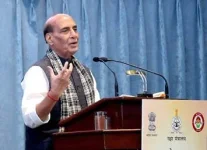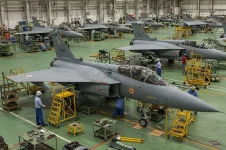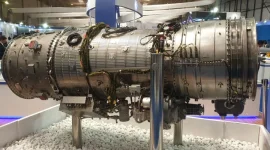As the world solemnly commemorates the 80th anniversary of the Hiroshima and Nagasaki bombings this week, it’s time to look back and reflect upon one of the most monumental and tragic event in human history and the real causes behind it.
By July 1945, at the dawn of the Atomic Age with the Trinity test conducted on July 16 1945; the war in Europe had already been won with the Nazi war machine effectively dismantled & decimated, Hitler relegated to the realm of history and Germany having surrendered. However, the preparations were on to win the final frontier, i.e., Japan and winning the war in the Pacific. The Soviets had effectively & invariably grabbed the global limelight & bragging rights by having been the first ones to reach Berlin and bring an end to Hitler’s brutal & tyrannical Nazi war machinery with an unconditional German surrender leading to the ultimate victory in Europe.
After the German defeat & surrender, the Soviets were preparing to invade Japan, thereby, breaking off from their neutrality pact with Japan, signed originally in April 1941 as a bulwark against the scenario of fighting on two fronts simultaneously against Nazi Germany and Japan respectively. This pact, in retrospect, effectively saved the Soviet Union while fighting against the brutal Nazi war machinery over the subsequent years, following Hitler’s invasion of the U.S.S.R. under Operation Barbarossa launched in June 1941, just two months after the neutrality pact with Japan. However, after the Nazi defeat, it was time for Stalin to settle scores with the old foe, the Japanese, against whom the Soviets had already fought from 1938 to 1941 and had territorial disputes as well, which continue to this day.
The Soviet decision to invade Japan was shared by Stalin with U.S. President Harry Truman and the British PM Winston Churchill at the Potsdam conference; which began on July 17, 1945, just a day after the ‘Trinity’ test; wherein, he confirmed that the Soviet Union was about to sign its official declaration of war against Japan (which came on August 8 1945, just 2 days after Hiroshima). He also told Truman that the Soviet forces had already launched preparations for the invasion and they were to land in Manchuria by mid-August 1945. On the Pacific front, getting to victory via an invasion would have been a highly expensive proposition for allies which was projected to extract a huge human toll and given that any allied military operation in the Pacific was months away from being a reality, owing to logistical reasons. However, letting Soviets finish the job in the Pacific would have enabled Stalin to grab territory in Japan, just like it had already happened in Eastern Europe earlier, and would have given Stalin a huge influence in the emerging world order which clearly had the tell-tale signs of a direct, imminent clash for geopolitical supremacy between the U.S. and the Soviets after the war.
The allied invasion of Japan; designated ‘Operational Downfall’; was already planned for November 1945 owing to logistics involved in mounting it. The onset of a Soviet invasion in early August itself would have given Stalin a clear head start and opportunity to gain further global influence, given the huge size and scale of the Red Army, which was much bigger than the allies, and had credible capabilities, as demonstrated in Europe earlier. The victory in Europe, and the hasty American retreat from the front lines earlier, despite Churchill’s repeated warnings, had given Stalin the opportunity to seize huge territories in Central & Eastern Europe which ultimately gave Soviets huge influence at the regional as well as global stage and effectively laid the foundation for the onset of the Cold War. Truman, thus, did not want that saga to be repeated in Japan.
The atomic bombing, thus, was the best option for the U.S. to end the war in the Pacific quickly while also effectively thwarting Stalin. Further, it would have also enabled America to hog global limelight by showing its nuclear might (and gain the accompanying, huge global influence as the sole nuclear superpower) and test the A-bomb in actual, real war setting, for the first time ever in human history. It would have also enabled America to avenge Pearl Harbor while sending a powerful message to America’s enemies and also effectively eclipsing the Soviet glory and role in bringing Hitler and the Nazis down in Europe earlier. Further, the island of Truk, now known as Chuuk, had been selected as the original target for atomic bombing in 1943, long before the bomb was even operational, owing to the fact that Truk was a Japanese naval base, equivalent of the American Pearl Harbor, and would have been a pure military target.
However, by 1945, the Truk Island and much of Japan; had already been destroyed by the conventional allied air bombings while Hiroshima had not been bombed ever. Some sources even say that it was being carefully preserved as the alternate, allied target for atomic bombing to assess the impact of A-bomb. Hiroshima was at the top of the list of Japanese cities on the allied hotlist for atomic bombing because of its size & layout, which would have effectively offset any potential inaccuracies in the dropping of the bomb from the B-29 Superfortress, in addition, to the high concentration of military and munitions production facilities located within Hiroshima.
The selection of Truk island as the initial target; and given that the Japanese were already willing to surrender (with some diplomatic concessions), even prior to atomic bombings; gives credence to the hypothesis that Hiroshima bombing, in a way, also, was in a way American revenge for Pearl Harbor intended at setting a precedent for others and forcing them to think before they dared to attack America. However, Oppenheimer & Co, the nuclear scientists & physicists who had made the bomb, wanted it to be rather detonated on an empty island to showcase it's destructive power to the Japanese which they believed would have made them surrender.
The decision to nuke Hiroshima, ultimately marked the end of an epoch and came a paradigm shift in history. It indeed made Stalin go berserk leading to his "Hiroshima has changed everything" remark and the subsequent quest for acquiring a similar & commensurate Soviet nuclear weapon capability, with his index finger almost itching for years to be able to control a similar nuclear button of his own.
The end of World War II with atomic bombings, thus, effectively laid the foundation for the onset of a relentless Cold War between the two former allies which was to effectively hold the entire world hostage under, what President Kennedy aptly described as, the ‘Hanging Nuclear Sword of Damocles’, for decades to come, which, however, came eventually at a whopping cost of almost $5.5 trillion to the U.S. taxpayers over 1940-1996. However, the actual reason for the atomic bombings was to stop Stalin in his tracks, primarily, and the extensively propagated ‘saving American lives’ theory is just apocryphal, at best. Further, the same geopolitical forces which drove the world towards Hiroshima & Nagasaki are actively at work again.
The world has effectively returned to another “Back to the Nuclear Future” moment in the 21st century now, with a nuclear renaissance underway globally, focused on ramp-up of nuclear warheads production as well as modernization of strategic delivery capabilities, which is likely to come at a cost of trillions of dollars collectively. Fuelled by the breakout of a 3-way nuclear arms race between the U.S., Russia and China with almost all Cold War era weapons control & limitation treaties virtually thrown under the bus and relegated to the realm of history; seemingly, it’s the appropriate time to pay heed to the iconic words of the U.S. President Kennedy, excerpted from his address to the UNGA 64 years ago in 1961, “The weapons of war must be abolished before they abolish us”...
Further, with the world effectively in the throes and grip of another global arms race now, marked by a deteriorating security environment and surging global defense spending, the following excerpt from the first public address of the former U.S. President, Dwight D. Eisenhower, given in 1953, and titled “The Chance for Peace”, almost echo a direct influence of Gandhian philosophy, and ring so true, once again, especially in the current geopolitical context:-
“A nation's hope of lasting peace cannot be firmly based upon any race in armaments -- but rather upon just relations and honest understanding with all other nations. Every gun that is made, every warship launched, every rocket fired signifies, in the final sense, a Every theft from those who hunger and are not fed, those who are cold and are not clothed. This world in arms is not spending money alone. It is spending the sweat of its laborers, the genius of its scientists, the hopes of its children. The cost of one modern heavy bomber is this: a modern brick school in more than 30 cities. It is two electric power plants, each serving a town of 60,000 population. It is two fine, fully equipped hospitals. It is some fifty miles of concrete pavement. We pay for a single fighter plane with a half million bushels of wheat. We pay for a single destroyer with new homes that could have housed more than 8,000 people. This is not a way of life at all, in any true sense. Under the cloud of threatening war, it is humanity hanging from a cross of iron...”
Regards,
Rajat Narang
Researcher | Author | Historian | A&D Specialist
https://www.amazon.in/stores/Rajat-Narang/author/B08JGJTT6N



